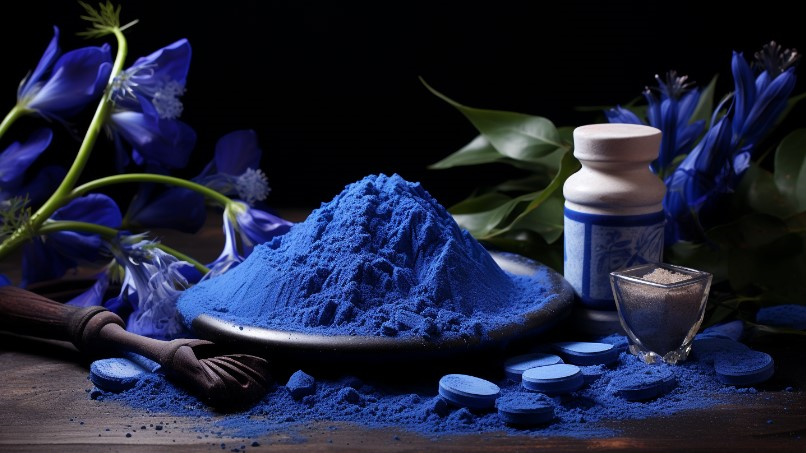Что нужно знать о натуральных пигментах

Раскрашивание теста, крема и теста в выпечке поможет передать индивидуальность и стиль.
С помощью раскрасок радужный торт получается удивительным, торт "Красный бархат" выглядит таким теплым, а градиентный торт - потрясающим.
Но зачастую вы не знаете, какие пигменты полезны и безвредны, как правильно их использовать и так далее.
Пищевые красители
Пищевые красители - это своего рода пигменты, то есть пищевые добавки, которые могут употребляться людьми в соответствующем количестве и в определенной степени изменять первоначальный цвет пищи.
Пищевые красители, как и пищевые ароматизаторы, делятся на натуральные и синтетические. Среди них натуральные пигменты нетоксичны для человеческого организма и обладают высокой безопасностью.
Натуральный пигмент
Натуральные пигменты - это пищевые пигменты, полученные из природных ресурсов. Пигменты добывают в основном из тканей животных и растений, а также микроорганизмов (культур), среди которых большую часть составляют красители растительного происхождения.
Натуральные пигменты не только выполняют функцию окрашивания продуктов питания, но и значительная часть натуральных пигментов обладает физиологической активностью.
То, чего вы не знаете
1. В настоящее время Китай является страной, в которой разрешено использовать самые натуральные пигменты в мире.
2, натуральные пигменты могут лучше имитировать цвет натуральных вещей, окрашивая оттенок более естественно.
3. Некоторые виды натуральных пигментов обладают особым ароматическим запахом, который может вызывать приятные ощущения при добавлении в пищу.
4, натуральные пигменты имеют высокую стоимость, плохую стойкость, сильная кислота и щелочь, высокая температура, свет и так далее влияют на его стабильность.
5, в натуральном пигменте больше примесей, и он легко выпадает в осадок при использовании.
6, натуральные пигменты нелегко поддаются равномерному окрашиванию, и трудно развернуть любой цвет самостоятельно.
Выбор натуральные пигменты
Какие распространенные натуральные пигменты можно использовать в различных продуктах питания в соответствующих количествах в зависимости от производственных потребностей:
Свекольный красный, красный дальний свет, цитрусовый желтый
Какие натуральные красители обычно используются для выпечки:
Свекольный красный, красный дальний свет, цитрусовый желтый, куркума, натрий медный хлорофиллКохиновый красный, кармин оранжевый, виноградная кожица красная, гардения синяя и т.д.
Какие натуральные цвета обычно используются в кондитерских изделиях:
Свекла красная, сорго красное, цитрусовые желтые, куркума, медный хлорофилл натрия, кохиновый красный, кармин оранжевый, виноградная кожица красная, гардения синяя, растительный углерод черный, редис красный, виноградная кожица, гардения желтая, цвет оболочки какао, капсикум красный, гардения синяя, перец оранжевый, красные дрожжи красные, красные дрожжи желтые.
Какие натуральные красители обычно используются в печенье:
Свекольный красный, сорго красное, цитрусовый желтый, куркума, медно-натриевый хлорофилл, кохиновый красный, кармин оранжевый, виноградная кожица красная, гардения синяя, монашеский красный, карамельный цвет, цвет скорлупы какао, перец оранжевый, капсикум красный, медно-натриевый хлорофилл, растительный углерод черный, гардения желтая.
Это широко используемые натуральные пигменты для выпечки пищевых начинок и развески целлюлозы на поверхности:
Свекольный красный, сорго красный, цитрусовый желтый, куркума, медный хлорофилл натрия, кохиновый красный, карминовый оранжевый, виноградная кожица красная, гардения синяя, красный монашеский красный, цвет скорлупы какао, перец оранжевый, перец красный, гардения желтая, гардения синяя, карамельный цвет.
Правильная консервация натуральных пигментов
1, обычно он хранится в запечатанном флаконе, с теплой влажной тканью, которая будет запечатана вокруг утечки слизи. Затем убедитесь, что крышка флакона плотно и правильно запечатана, чтобы цвет пигмента не капал на шкаф или другие места.
2. После закручивания крышки подержите бутылку вверх дном и посмотрите, не пропал ли пищевой краситель. Если герметичность крышки бутылки плохая, это также может повлиять на сохранность продукта.
3. Храните запечатанный пищевой краситель в сухом и темном месте. Чтобы избежать неудобств, связанных с пропажей пигмента, лучше всего положить слой картона на место, где находится запечатанная бутылка с пигментом, или хранить ее в бумажной коробке.
поставщик натуральных пигментов: www.backvita.com
Электронная почта: [email protected]
Телефон: +86 (029) 8187 2325
